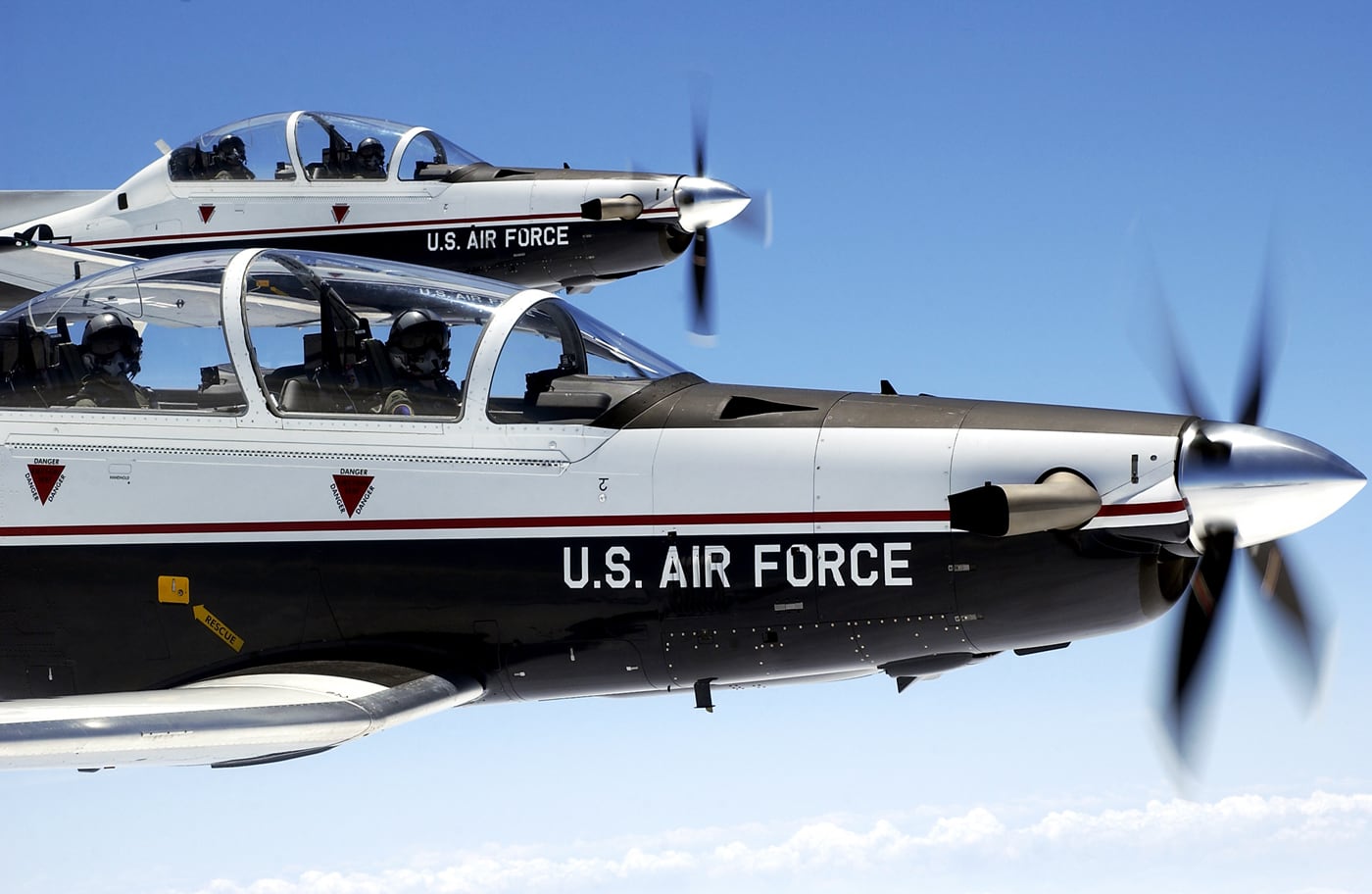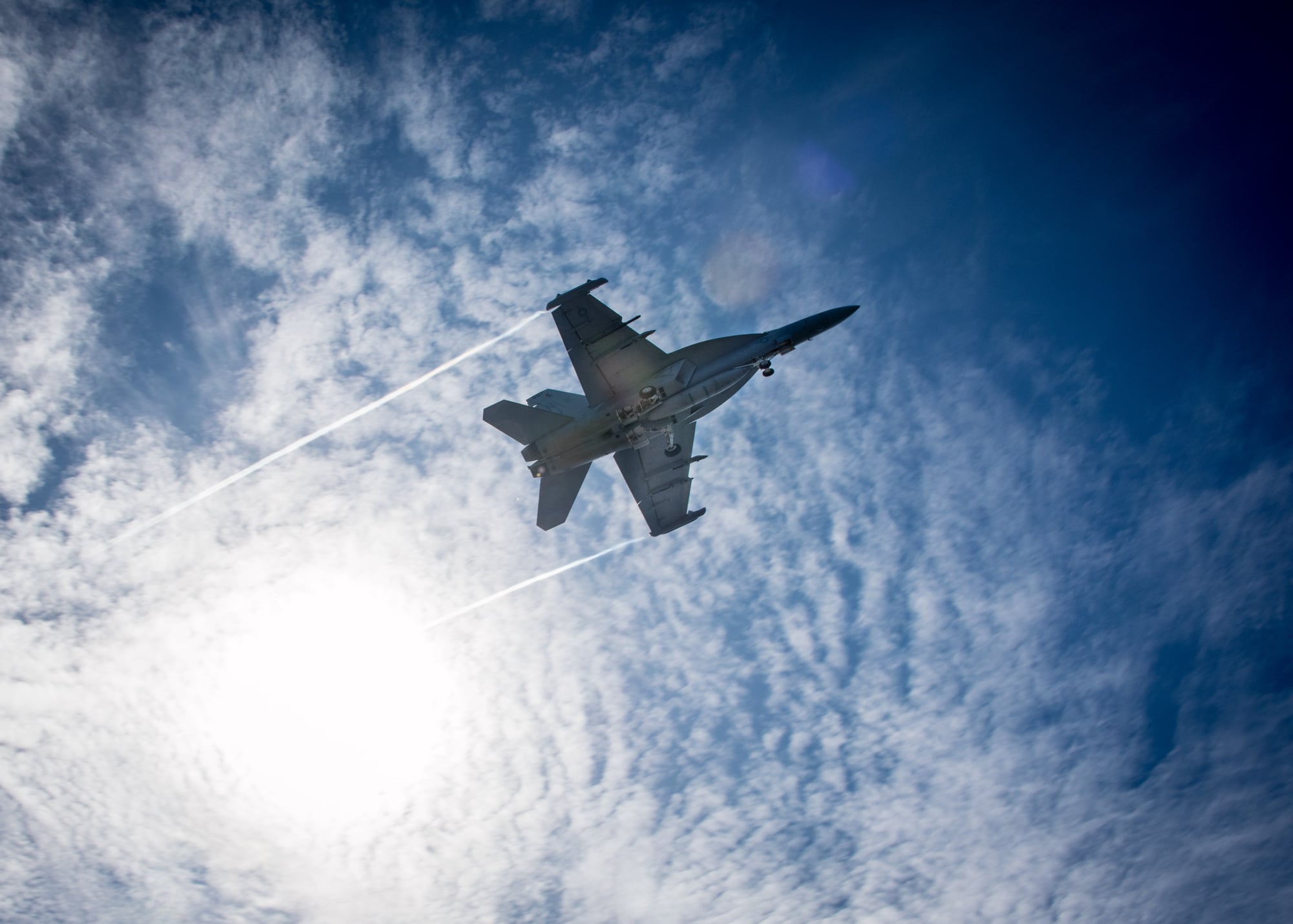The Air Force’s T-6 trainer — which was grounded at the beginning of February after a rash of hypoxia incidents — could resume flights as early as Monday.
Lt. Gen. Steven Kwast, head of Air Education and Training Command, said during a roundtable with reporters Thursday at the Air Force Association’s Air Warfare Symposium that they could return to flying status, with restrictions, next week if everything goes according to plan.
Kwast’s comments were first reported by Aviation Week and confirmed by AETC.
AETC spokesman Master Sgt. Joshua Strang said in an email that more tests need to be done on the trainers before they can make a final decision on whether to fly them again.
The 19th Air Force’s fleet of T-6 Texans were grounded Feb. 1 after 13 instances of hypoxia or other unexplained symptoms in a single week in January. Of those, 10 occurred at Columbus Air Force Base in Mississippi, two occurred at Vance Air Force Base in Oklahoma, and one happened at Sheppard Air Force Base in Texas.
Vance also suspended its T-6 flights for nearly three weeks last November and December after a handful of hypoxia or hypoxia-like events. But investigators couldn't pin down the cause of the problem, and resumed flights Dec. 5.
Grounding the entire T-6 fleet — which 19th Air Force commander Maj. Gen. Patrick Doherty called “our primary workhorse” for training new pilots — costs the Air Force 700 sorties a day. This is particularly a problem now, since the Air Force is trying to train more new pilots as part of an effort to solve an alarming pilot shortfall across the service.
RELATED

In Thursday’s roundtable, according to a transcript provided by AETC, Kwast said investigators are finding that some pieces of the onboard oxygen generation system, or OBOGS, might need to be maintained or replaced more frequently.
Kwast also said that pilots could resume flights in the T-6, as long as they can turn off the OBOGS system and breathe cockpit air. Air Force and NASA experts have been measuring ambient air in T-6 cockpits and found that it’s clean and breathable, he said.
Resuming flights, as long as pilots can breathe ambient air, will give scientists and engineers more time to find the root causes of the problem, Kwast said.
“We don't know yet” what is really causing the problem, Kwast said. “We have indicators, but to jump to that conclusion would be to not allow the scientists and engineers the time to really test things properly. But we have gone in and we have done some testing on certain components, and we’ve found some of them that are failing more often than they should, and that’s an indication that there are some issues there.”
Kwast also said the Air Force has noticed some shutoff valve failures, and other issues with the plenum, or reservoir, of the oxygen system.
The Air Force is also consulting with the Navy to find out what they've learned from their own hypoxia problems.
RELATED

But Doherty said the Air Force isn't going to do anything that puts its instructor pilots and students at risk.
“The priority of our people and our air crews [is to] make sure they have a safe flying environment,” Doherty said. “Thats what’s driving it. We’re not worried about timelines. We’re not worried about a logjam of pilot candidates that are stacking up. We’re worried about taking care of our primary number one weapon system, [which] is our people.”
Stephen Losey is the air warfare reporter for Defense News. He previously covered leadership and personnel issues at Air Force Times, and the Pentagon, special operations and air warfare at Military.com. He has traveled to the Middle East to cover U.S. Air Force operations.
